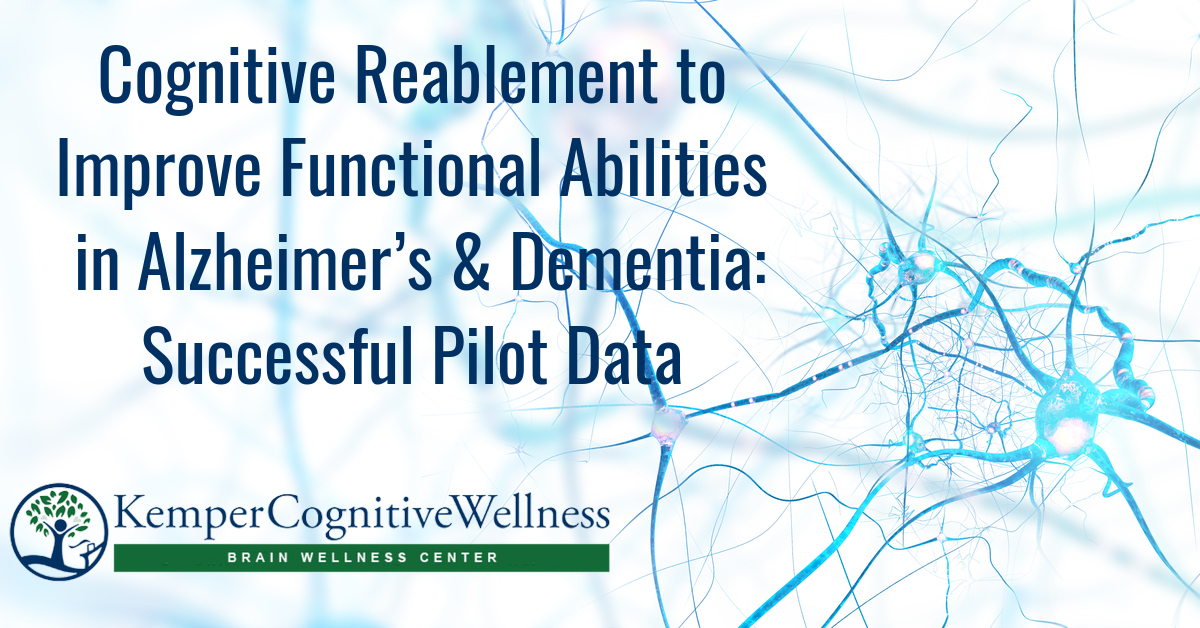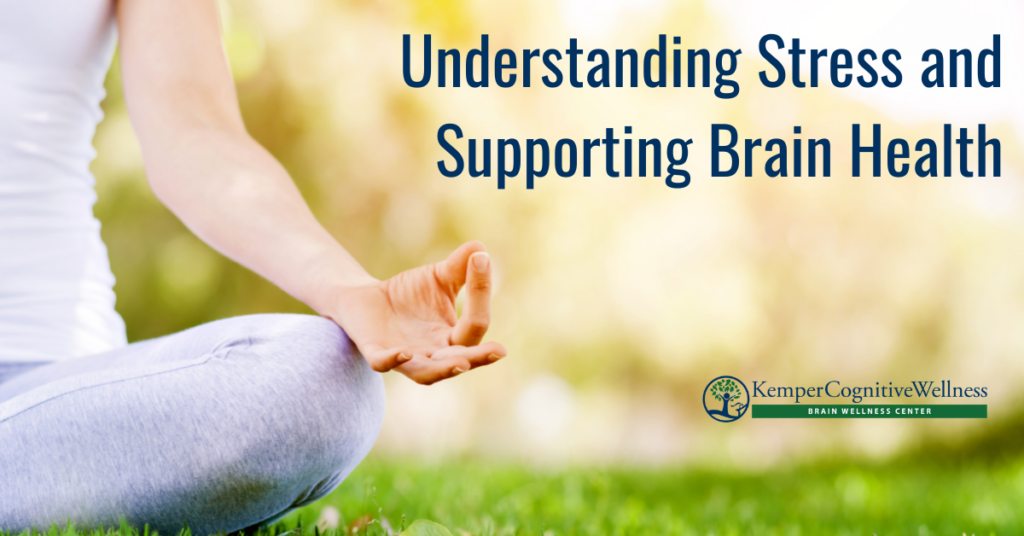Pilot Objective
To determine whether a rigorous cognitive reablement program could improve symptoms of persons with Alzheimer’s or other dementias that are likely to translate to improved quality of life and recovery of lost skills critical for maintaining independent living.
Rationale
Despite a diagnosis of Alzheimer’s or related dementia, recent evidence has shown that multi-domain therapies such as cognitive reablement programs may allow for stabilization of decline and/or some recovery of cognitive, physical, and other functional abilities. Such gains are presumed to lead to enhanced quality of life, relative increase in independence and ability to remain at home, decreased care partner burden, and overall reduced cost of care to the healthcare system.
Methods
Five individuals living in an Alzheimer’s/dementia care assisted living home were identified as potential participants, based on cognitive function and other health considerations including medication and absence of potential contraindications. Participants and/or their next of kin underwent informed consent prior to inclusion in the pilot program. Individuals participated for three months in targeted daily protocols that included: sensory-motor stimulation, visual-spatial stimulation, mindfulness training, combined resistance and aerobic exercises under variable loads of cognitive tasks, social interaction, and wearable neuromodulatory technology.
The program was delivered by an experienced program coordinator. Participants’ vital signs were measured daily for the majority of the duration of intervention to gauge any unanticipated adverse reaction to elements of the program. Standardized markers of cognitive and physical performance were assessed before and after the 3-month pilot intervention.
Standardized Outcome Measures
- Mini-Mental Status Exam (MMSE)
- Gait Speed
- Timed Up and Go (TUG) Assessments.
Secondary Outcomes Included
Upon conclusion of the pilot, the program coordinator conducted a structured interview with each participant’s healthcare delegate. Delegates were queried for subjective feedback and observation.
Results
Nearly all outcome measures revealed improvements (see Figure 1: Pilot Data). One participant was excluded from the program secondary to disinterest in participation. No serious adverse events were recorded.
| Initial Gait Speed (m/s) | Final Gait Speed (m/s) | Initial TUG (3 m) |
Final TUG (3 m) |
Initial MMSE | Final MMSE | |
| Participant 1 | 0.8214 | 1.0127 | 14.96 | 10.05 | 18 | 26 |
| Participant 2 | 0.4624 | 0.5900 | 22.12 | 17.85 | 13 | 23 |
| Participant 3 | 0.0200 | 0.5229 | ∞ | 23.39 | n/a | n/a |
| Participant 4 | 0.7421 | 0.9238 | 14.66 | 10.35 | 13 | 18 |
Figure 1: Pilot Data
Case Study, Female Participant 1
A 67-year-old female living in a residential Alzheimer’s community for 2 years, at program outset Maria presented as non-verbal, depressed, unsteady gait, non-adherence with taking medications, destructive of her room and common areas.
Socially, Maria became more aware of and engaged with her surroundings during the Pilot study. Maria started to speak to others. She verbalized when she didn’t feel well, ask for help, greet other participants, hold doors, helped the less able, and asked about certain topics she was interested in, like tennis.
Cognitively, Maria gained the ability to complete puzzles and other spatial-related tasks independently. She is more aware of the calendar, and what day it is; she is familiar with the tennis schedule and asks for assistance in finding the match on TV. When at her best, Maria remembers where things are and what she is doing. She seeks out others to ask questions or for help. Maria is able to identify needs and fulfill them on her own: she gets herself a glass of water, seeks out puzzles and works independently on them, and other activities that indicate that is she is very aware of her surroundings. Maria’s MMSE score increased 8 points over the course of the study, to 26 out of a possible 30 points.
In terms of motor skills, Maria’s grip and steadiness improved. At the completion of the study, she is once again able to independently and skillfully use eating utensils steadily without spilling on herself. She began cleaning up after herself on most days. Maria eagerly engaged in the daily physical activity and the results were significant: her up and go score has improved by 4.91 seconds, and her gait speed increased by 0.19 meters/second.
Maria’s daughter noticed many improvements during her interactions with Maria. Most notable, she felt Maria was able to talk with her more, she was laughing, smiling, and joking again, and “her personality came back in a number of ways.” It’s important to Maria’s daughter that she does what she can for herself; she appreciated that Maria was once again able to cut her own food and feed herself. She also noted that her mother was always fit, but she let that go as she got older. She noted that her arms and legs look and feel stronger.
Conclusion
Kemper Cognitive Wellness demonstrated a successful proof of concept for BrainFit® in the first quarter of 2021 with a small group of residents at a long-term residential Alzheimer’s and dementia care home in Cleveland, Ohio. Due to the limitations of the COVID-19 pandemic, the program was piloted with persons living with advanced dementia. “I was very cautiously optimistic,” says Dr. Nate Bergman. “We applied a scaled back intervention to individuals with quite significant cognitive impairment. Our team was a little surprised to see the impact of the interventions on these residents as well as the comments from the individuals that know them best.”





